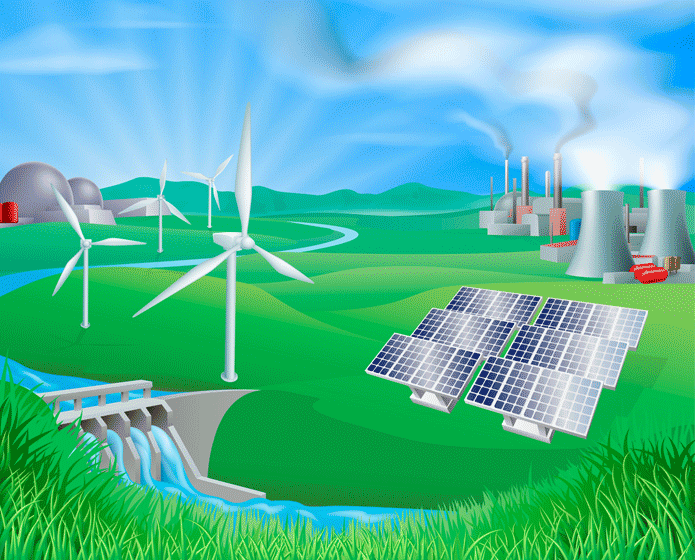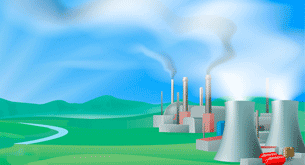
Facts about Power Generator Stations
Posted by Admin / in Science Facts
Electricity is produced by power generating stations. The electricity that is produced is transmitted by power lines to the power grid for use by homes, schools and businesses. Various methods are used at these stations to produce the electricity. Find out the types of power generator stations and facts about power generating stations.

Fossil fuel power plants and nuclear power plants provide approximately 80 percent of the world's electricity supply.
Power Generator Station Types and Facts
- The most common type of power station is the thermal power station. Thermal power stations burn coal, oil or natural gas to make steam. The steam expands creating pressure that spins turbines. The spinning turbines produce electricity using a magnetic field, the same way as a small generator works.
- Approximately 67 percent of the world's power is made by burning fossil fuels to make steam which turns the turbines. These are considered thermal power stations.
- Approximately 40 percent of the world's power is made at thermal power stations that burn coal.
- Approximately 22 percent of the world's power is made by thermal power stations that burn natural gas. Clean natural gas power plants are growing because of new technologies with fracking. Natural gas energy production is also on the rise because of compressed natural gas technology which allows transportation of natural gas beyond pipelines because it can be compressed to 1 percent of the original gas volume.
- Hydroelectric power stations use the potential energy of water to produce electricity. Water stored at a higher elevation has potential energy. As the water flows down, it can turn a turbine, the same way that steam from a thermal power plant provides the turning power. Dams and rivers are places that engineers use to set up a hydroelectric power station.
- One of the first power stations in the world was a hydroelectric plant. It is located at Niagara Falls, New York and was designed by George Westinghouse and Nikola Tesla.
- Approximately 16 percent of the world's power is produced by hydroelectric power stations.
- Nuclear power stations use nuclear fission to produce electricity. Uranium or thorium, which are radioactive elements, are used as fuel. Since a neutron is neutrally charged, it is sent at high speed towards the radioactive atoms. The neutron splits the atoms, resulting in the release of a large amount of heat and light. The heat turns water to steam, which turns the power station turbines. Like the thermal power station and hydroelectric plant, the turbines produce electricity by using a magnetic field.
- The United States, followed by France, Russia and South Korea produce the most power from nuclear power plants.
- The United States is capable of producing over 750 billion kilowatt hours, with their nuclear power plants. This is the equivalent of the power produced by solar panels covering more than 18.8 billion acres of land.
- There is a growing trend world-wide, particularly in developing countries to build more nuclear power plants. Over 70 new nuclear reactors are under construction as of 2013.
- Approximately 13 percent of the world's power is produced by nuclear power stations.
- Renewable (also known as green energy) is a growing, but in terms of power produces, is only a very small percent of the world's power supply. Renewable power only accounts for about 4 percent of the world's power supply. Renewable power generators include solar power, wind power, geothermal energy, biofuels, hydroelectric and wave power plants.
- The U.S. Department of Energy estimates that 10 million acres of land is required to generate the amount of electricity used each year in the United States if the electricity is generated by renewable solar panels. This figure, however, could be much higher. Some scientists estimate that more than 144 billion acres of land is needed, if the solar panels perform as efficiently as one of the largest solar fields in United States, located in the Mojave Desert.
- Fossil fuels are projected to supply almost 80 percent of the world's energy through the year 2040.
